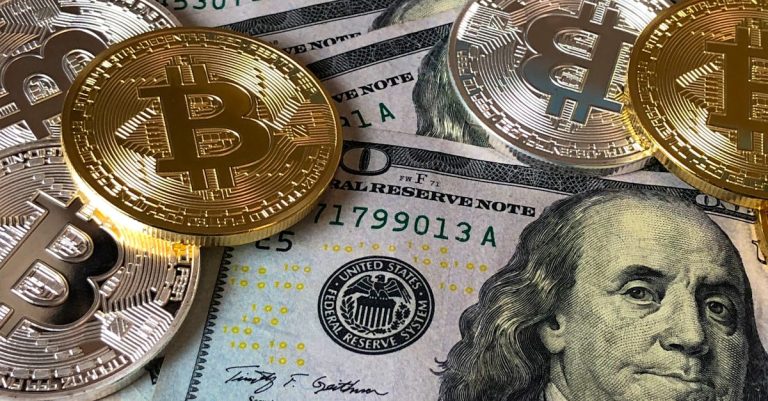Xrp’s Price Volatility And Whale Influence
Ripple Labs is a technology company that specializes in the development and marketing of the digital asset XRP. XRP is a decentralized cryptocurrency designed to enable fast, cost-effective international payments. It is one of the most popular cryptocurrencies and has been subject to extreme volatility in price due to its susceptibility to various market forces, including large traders known as ‘whales’. This article will explore the phenomenon of price volatility in XRP and analyze how whale influence impacts it.
The objective of this article will be to discuss how whales are able to manipulate prices through their trading activities, what potential regulatory responses can be implemented, and what impact this could have on XRP investors. An analysis of past market data will also be conducted in order to provide insight into how whale activity affects prices over time.
Overview of Ripple Labs and XRP
Ripple Labs and its cryptocurrency, XRP, are popular entities within the global crypto-market due to their perceived significant influence on price volatility. Ripple technology is a distributed ledger system for payments which has been developed by Ripple Labs over the past few years. XRP is their native token that was designed to facilitate fast and secure cross-border payments with minimal costs. It also provides utility as a bridge currency between different fiat currencies and digital assets. Although there have been debates about whether or not XRP has real value, it remains one of the top three cryptocurrencies in terms of market capitalization. As such, any significant changes in its price have an effect on the entire crypto-market. This makes understanding how whales impact XRP’s price volatility all the more important.
What is a Whale?
A whale, in the cryptocurrency context, is typically a large holder of coins. Their size and influence in the market can be considerable as they possess enough funds to move markets. Whales are known to accumulate XRP by buying large amounts of the coin at a time and then holding it for long periods. This strategy gives them greater control over the price fluctuations of XRP.
The size and influence of whales
Whales, owning large sums of cryptocurrency, can have a profound sway on the fluctuating price of XRP, like ripples in a pond. By taking advantage of ripple mining and whales trading techniques, these investors are able to amass large amounts of XRP quickly. This enables them to have considerable control over the market; they can drive prices up or down simply by buying or selling XRP. This influence has become even more powerful as more traders enter the market and their share of total volume increases. As a result, whales have significant impact on the short-term volatility of XRP’s price. The ability of whales to accumulate large quantities of XRP is an important factor that needs to be considered when analyzing its price movements.
How whales accumulate XRP
Investors employ various strategies to accumulate large quantities of cryptocurrency, such as Ripple (XRP), in order to gain control over the market and influence price movements. One strategy whales use is engaging in whale trading, which involves buying or selling large amounts of XRP on different exchanges. This provides liquidity to the exchanges, enabling more investors to join in and making it easier for whales to buy larger amounts without disrupting the market. Whales also often take advantage of liquidity pools where they can anonymously trade XRP while maintaining their anonymity. By utilizing these strategies, whales are able to acquire a significant amount of XRP at once, and thus have greater power when it comes to influencing price movements. With this power comes an increased volatility of XRP prices that can be seen through drastic fluctuations in the market.
Price Volatility of XRP
XRP’s price has experienced significant fluctuations over the past few years, making it an attractive investment for those seeking short-term gains. This volatility is driven by a variety of factors, including market sentiment and external economic conditions. However, the most notable factor contributing to XRP’s price volatility are cycles of large sales or purchases made by whales – individuals who own large amounts of cryptocurrency. These cycles can be seen in the form of abrupt changes in prices that seem to repeat themselves over time, suggesting possible manipulation of XRP’s price through whale activity. As such, understanding how whales accumulate XRP and influence its pricing is essential for predicting future price movements.
Whale Influence on XRP’s Price Volatility
The sway of large cryptocurrency holders on XRP’s market movements can be likened to the waves of an ocean, impacting prices with each ripple. These large holders are commonly referred to as "whales"and their influence is based on their ability to manipulate liquidity mining which affects the price of XRP. Whales have been observed to engage in strategies such as "pump and dump", where they buy a significant amount of tokens, increasing its value and then sell it at a higher price point. This kind of behavior creates sudden spikes or drops in the price, leading to increased volatility. To combat this issue, regulators have put forth various proposals aimed at curtailing whale activity.
Potential Regulatory Responses
The potential regulatory responses to whale influence on XRP’s price volatility can be divided into two categories: cryptocurrency regulations and exchange regulations. Cryptocurrency regulations encompass a range of government policies, such as taxation, money laundering prevention, and trading restrictions. Exchange regulations involve the monitoring of market activity to detect manipulation or other illegal activities; they may also include establishing limits on large positions or requiring investors to disclose their holdings. Both approaches have been discussed in the context of cryptocurrencies, but their effects are yet to be determined.
Cryptocurrency regulations
Regulatory oversight of cryptocurrency markets is an increasingly important factor to consider when looking at the price volatility of digital assets such as XRP. This includes both tokenized transactions and smart contracts, which can be subject to certain regulations depending on how they are used. The regulatory environment has a significant impact on the market forces that drive price volatility, including the influence of whales who have large holdings of XRP. Therefore, understanding exchange regulations in particular is essential for assessing the effect that regulation may have on pricing activity. By understanding these regulations, investors can better assess the potential risks and rewards associated with trading digital assets like XRP.
Exchange regulations involve rules governing how crypto exchanges operate and setting out requirements for transactions conducted through those exchanges. Such regulations usually cover topics such as listing standards, anti-money laundering (AML) compliance measures, customer identification protocols and investor protection measures. These rules often differ from country to country due to varying interpretations of what constitutes a security or money transmission services; this means it is important to ensure you understand relevant local regulations before investing in any crypto asset. Understanding exchange regulations can also help investors mitigate potential risks associated with high-volume trading activities by whales and other large holders of XRP.
Exchange regulations
Cryptocurrency regulations are an important factor for investors to consider when investing in digital assets. However, exchange regulations are also a key determinant of the success or failure of cryptocurrency investments. Exchange regulations can shape how crypto derivatives and custodial services function, enabling investors to access a variety of different asset classes. This ultimately allows them to diversify their portfolios and reduce risk while increasing their potential returns. In addition, exchanges must adhere to strict Know Your Customer (KYC) and Anti-Money Laundering (AML) standards that can provide additional security for traders who use these platforms. With proper regulation in place, exchanges have the ability to create trust with their users and attract new customers through transparency. As such, understanding the different regulatory frameworks around cryptocurrency trading is essential for any investor looking to capitalize on this market opportunity. The implementation of these regulations has an impact on all crypto investors; however, it may be particularly pertinent for those invested in XRP due to its high price volatility and whale influence.
Impact on XRP Investors
Shockingly, XRP investors face extreme risks due to the price volatility and whale influence of the cryptocurrency. Market sentiment is a key measure for investors, as it determines whether or not there is an appetite for risk in investing in XRP. This is especially crucial given the potential impact that whales can have on prices; if they choose to enter or exit the market en masse, this could cause significant fluctuations in value. As such, risk management strategies are essential for any investor looking to capitalize on XRP’s potential growth. Strategies such as diversification and stop-loss orders can help reduce the chances of experiencing major losses due to sudden drops in price. Ultimately, though, it’s important that investors understand the inherent risks associated with investing in XRP before taking any action.



 Bitcoin
Bitcoin  Ethereum
Ethereum  Tether
Tether  XRP
XRP  USDC
USDC  TRON
TRON  Lido Staked Ether
Lido Staked Ether  Dogecoin
Dogecoin  Figure Heloc
Figure Heloc  Cardano
Cardano  Bitcoin Cash
Bitcoin Cash  WhiteBIT Coin
WhiteBIT Coin  Wrapped stETH
Wrapped stETH  Wrapped Bitcoin
Wrapped Bitcoin  USDS
USDS  Wrapped eETH
Wrapped eETH  Binance Bridged USDT (BNB Smart Chain)
Binance Bridged USDT (BNB Smart Chain)  Chainlink
Chainlink  Zcash
Zcash  Monero
Monero  LEO Token
LEO Token  WETH
WETH  Stellar
Stellar  Coinbase Wrapped BTC
Coinbase Wrapped BTC  Ethena USDe
Ethena USDe  Hyperliquid
Hyperliquid  Litecoin
Litecoin  Avalanche
Avalanche  Sui
Sui  Hedera
Hedera  sUSDS
sUSDS  Shiba Inu
Shiba Inu  Uniswap
Uniswap  Dai
Dai  USDT0
USDT0  Canton
Canton  Toncoin
Toncoin  World Liberty Financial
World Liberty Financial  PayPal USD
PayPal USD  Cronos
Cronos  Ethena Staked USDe
Ethena Staked USDe  Mantle
Mantle  USD1
USD1  Polkadot
Polkadot  Rain
Rain  MemeCore
MemeCore  Bitget Token
Bitget Token  Aave
Aave